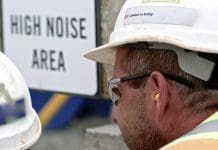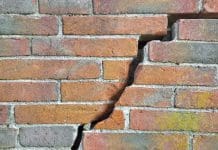The Association for Specialist Fire Protection is working with construction industry stakeholders to define passive fire protection competencies
The Building Safety Regulator, established under the Building Safety Act, has created a new Industry Competence Committee (ICC), with a dual role to provide evidence-based advice on competence to the regulator and promote the need for improved standards of competence across the built environment.
The Association for Specialist Fire Protection (ASFP) is supporting the ICC’s drive to help bring the industry together and encourage a more cohesive approach to competence.
The ASFP is also supporting the industry Competence Steering Group’s Working Group 2, which is dedicated to defining competence requirements for installers throughout the built environment. The association has been leading its work with fire-stopping specialists; one of six priority occupations identified.
How is the ASFP collaborating with stakeholders?
The ASFP, in collaboration with the Firestopping Specialist Sector Group (FSSG), has spent several months compiling a map of the activities carried out within fire-stopping and has proposed benchmarks for competence in each.
Wider industry consultation on these outputs has been undertaken and the group is now considering the responses. The ASFP has also agreed to facilitate a second group focusing on ductwork and dampers.
While eager to work collaboratively across industry, the association has also been working on two other areas critical to ASFP members.
Within the Design & Specify domain, the association has worked to define dedicated activities focused on the design of passive fire protection within buildings, as well as benchmarks for competence in each in terms of skills, knowledge, experience and behaviour (SKEB).
The ASFP is bringing together colleagues from within passive fire, as well as Tier 1 contractors and other interested parties, to validate these outputs before adoption.
In a similar fashion, the ASFP is also defining activities in the Sell & Distribute domain, focused on placing passive fire protection products on the market. While closely mapped to the requirements of the Code for Construction Product Information (CCPI), these will include additional detail specifically for the PFP industry. Competence benchmarks have also been created and will soon be released for consultation.
The ASFP Framework of Competencies
While there are several competence frameworks being developed, and other competence benchmarks in existence that might also fulfil a similar role, the ASFP has created its own online Competence Framework to support the PFP sector.
The Competence Framework forms the first step on the ASFP’s Competency Pathway, which aims to support the industry in adopting a unified approach to building, evidencing and promoting competence across the PFP sector.
Working with other organisations, the ASFP has developed the framework to specify what competency in PFP looks like. It brings together content developed by the ASFP and industry groups in a free, easy to use website, which is open to all.
What does the new framework cover?
The framework covers activities specific to PFP, in seven areas across the building lifecycle, namely: Design & Specify; Procure; Sell & Distribute; Install; Inspect; Maintain; and Own & Occupy. These are then further broken down by complexity, ranging from Foundation through Intermediate, Experienced and Advanced to Authoritative.
By defining activities, rather than job roles or occupations, the framework reflects the fact that people working within a range of roles may be involved in PFP activities. Such roles may range from architects, surveyors, installers and inspectors to facilities managers.
For each activity, the framework outlines the skills, knowledge, experience and behaviours agreed by the industry working groups detailed above.
Each activity definition is presented in a consistent format, with expected competencies detailed in the four quadrants of: Culture & Behaviour; Currency of Competence; Core Abilities; and Specific Abilities. To establish competency in the activity, an individual must be able to demonstrate they meet all the statements within all the groups.
What is next for passive fire protection?
The framework is an evolving database and will have information added to it over time as more guidance is produced. The current site has a particular focus on PFP installation activities, and particularly fire-stopping.
Activities in many of the other areas are not yet fully defined and agreed by industry and there is an ongoing programme to develop these statements and bring together further content from various sources, including the ASFP.
As consultation continues and more detailed statements are finalised these will be added to the system, while those already defined in detail may evolve over time, reflecting changes to industry best practice.
Defining and publishing a benchmark for competence is a vital first step. The ASFP working to develop much more, including further training courses, recognition of third-party training against the framework, collection of evidence against these criteria, validation of competence in these activities and ultimately an ASFP Pass Mark.
Association for Specialist Fire Protection
Tel: +44 (0)247 693 5412

















